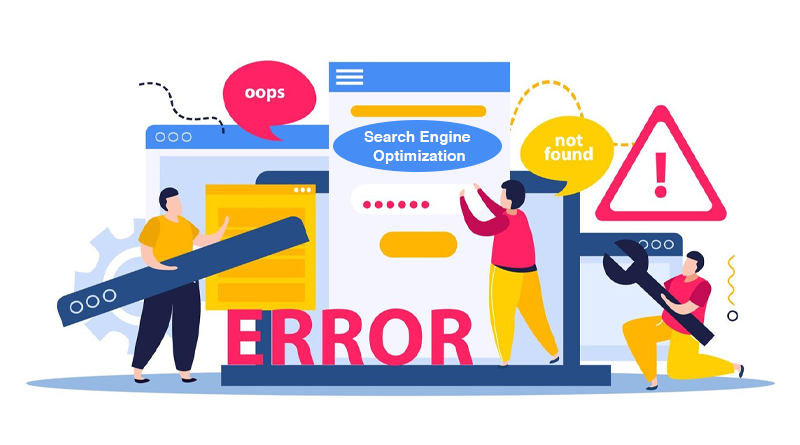In the powerful domain of e-commerce, the excursion from startup to progress is loaded with difficulties. For budding entrepreneurs and business owners, it is pivotal to avoid common errors. Here, we’ll dive into seven common E-Commerce startups mistakes that frequently plague internet business new companies and give noteworthy methodologies to sidestep them.
Mistake #1: Ignoring Mobile Optimization
In an era dominated by smartphones, neglecting mobile optimization is a cardinal sin for e-commerce ventures. The growing pattern of portable shopping highlights the requirement for a consistent versatile encounter. Failure to optimize for mobile devices might result in severe client loss.To dodge this, embrace best practices for versatile enhancement, guaranteeing your site is as engaging and functional on mobile phones for what it’s worth on bigger screens.
Read also : How to Develop a Mobile Strategy for your Retail Chain Businesses

Mobile responsiveness is not just about adapting to different screen sizes; it’s about creating an experience that is intuitive and efficient. Users should be able to navigate your site, browse products, and complete transactions with ease on their mobile devices. This isn’t a luxury; it’s a necessity in a market where a large portion of consumers rely on their smartphones for online activities.
Mistake #2: Underestimating the Importance of SEO
Search Engine Optimization (SEO) serves as the backbone of e-commerce success. Underestimating its significance can relegate your startup to the shadows of online obscurity. Investigate the urgent significance of SEO in improving online exposure and drawing in organic visitors. Recognize frequent SEO blunders made by startups and implement efficient techniques to climb search engine ranks.

Your e-commerce website might offer the best products, but if potential customers can’t find them in the vast ocean of the internet, your efforts might go unnoticed. SEO isn’t just about stuffing keywords into your text; it’s an essential way to deal with make your site more noticeable to web indexes and, therefore, to clients effectively searching for items or services you offer.
Read also : 15 Important Retail KPIs Every Business Owner Should Know
Mistake #3: Neglecting Website Speed and User Experience
A sluggish website and a subpar user experience can swiftly drive potential customers away. Understand the effect of site speed on consumer loyalty and deals. Unpack the components of a great user experience and give bits of knowledge into further developing site speed and overall user engagement.

Imagine entering a physical store where the shelves are disorganized, the aisles are cluttered, and the checkout process is tedious. Chances are, you’d leave without making a purchase. The same principle applies to your e-commerce website. A fast, well-organized site with an intuitive user interface creates a positive impression and encourages visitors to stay and explore.
Mistake #4: Overlooking Customer Service
In the realm of e-commerce, customer service is the linchpin that holds success together. Overlooking its significance can lead to dissatisfied customers and tarnished reputations. Feature the critical job of client support, pinpoint normal mistakes, and deal with down-to-earth ways of hoisting consumer loyalty through mindful and responsive help.

Customer service is not merely a post-purchase formality; it’s an ongoing relationship-building process.A pleasant customer experience is enhanced by prompt responses to inquiries, effective problem resolution, and proactive communication.
In a competitive market, exceptional customer service can be the differentiating factor that fosters customer loyalty and positive word-of-mouth.
Read also : 5 Ways To Improve The Customer Experience
Mistake #5: Ineffective Product Descriptions and Images
Compelling product descriptions and images are the silent persuaders that sway consumer decisions. Missed chances can occur from failing to maximize these important factors. Neglecting to advance these basic components can bring about botched open doors. Enlighten the effect of product presentation on customer behavior, disclose normal missteps, and give tips for creating overwhelming item depictions and outwardly engaging pictures.

When customers can’t physically touch or try your products, the importance of high-quality images and detailed descriptions cannot be overstated. Think of your product pages as virtual shelves, and each product description and image as a salesperson guiding the customer’s decision. Put time and exertion into creating engaging content that conveys the worth and uniqueness of your items.
Mistake #6: Failing to Understand the Target Audience
E-commerce success hinges on a deep understanding of the target audience. Neglecting market research can lead to misguided strategies and missed connections. Accentuate the significance of thorough statistical surveying, clarify the outcomes of ignoring the main target audience, and provide practical advice to direct successful research that illuminates and refines your business approach.

Your target audience is not a single entity; it consists of people with a wide range of tastes, habits, and demands. Market research helps you portion and grasp these subtleties. Understanding your listeners’ perspective permits you to tailor your marketing strategies, product offers, and communication to resound with the particular necessities and wants of individuals you expect to serve.
Mistake #7: Poor Inventory Management
Efficient inventory management is the backbone of operational smoothness in e-commerce. Poorly managed inventory can lead to stockouts, overstocking, and logistical nightmares. Powerful stock administration includes anticipating requests, upgrading stock levels, and smoothing out satisfaction processes.

Stock isn’t just about putting away items; it’s tied in with guaranteeing that the ideal items are accessible brilliantly. Forecasting demand, optimizing stock levels, and expediting fulfillment operations are all part of effective inventory management.
A well-managed inventory not only prevents financial losses but also enhances customer satisfaction by minimizing delays and ensuring product availability.
Read also : Inventory Management: Why It Matters and How It Gets Tricky, Explained
Conclusion
In steering through the intricate landscape of e-commerce, awareness of these common pitfalls is your compass. Mobile optimization, SEO prowess, user-centric websites, exemplary customer service, compelling product presentation, a profound understanding of the target audience, and adept inventory management collectively pave the way to success.









